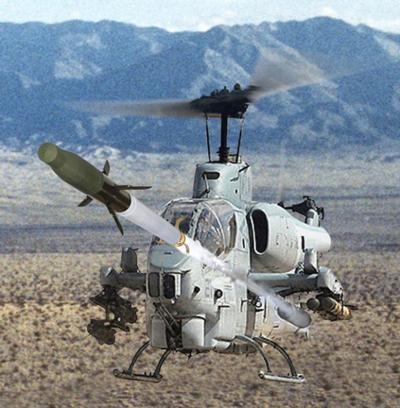Sun, Oct 20, 2013
Ends Joint Capability Demonstration Test For APKWS
CENTCOM released a Military Utility Assessment (MUA) report Sept. 27 which serves as the official document of the fixed wing (FW) tests’ outcome, confirming weapon performance and minimizing safety of flight concerns. The MUA is another step toward a follow-on FW Advanced Precision Kill Weapon System (APKWS) addition to the current Program of Record.

"The entire FW JCTD team should be commended on the successful execution of the test program," Navy Capt. Al Mousseau, PMA-242 program manager said, "the completion of these tests and the conclusion of the JCTD was a significant step towards demonstrating the operational effectiveness for an affordable, fixed wing, forward firing, air-to-ground, low collateral weapon in support of the close air support mission."
The difference between fixed and rotary wing aircraft may be obvious, but the difference between the missiles they carry may not be as apparent. A joint effort between PMA-242’s engineering team here at Naval Air Station Patuxent River and the Air Force Life Cycle Management Center Global Precision Attack Integrated Product Team led to the development and test of an APKWS that could survive the faster and high flight environment of fixed wing aircraft.
“Fixed wing APKWS uses a different guidance control system to compensate for the higher altitude and longer range employments of the weapon,” Cmdr. Alex Dutko, Airborne Rockets /Pyrotechnics deputy program manager for PMA-242 explained. “The deployment mechanism had to be redesigned in order to overcome the higher aerodynamic forces of the fixed wing environment.”
Guidance section tests not only demonstrated design robustness but also helped reduce risk in subsequent live-fire tests, Dutko continued. Rocket testing included ground launches and two different aerial launches, performance and MUA shots. Flight launches were tested from the A-10 Thunderbolt II, AV-8B Harrier II, and F-16 Fighting Falcon. “The variety of tests helped us evaluate weapons systems build up, loading and delivery, and later, illustrate that the weapon would perform, as designed, to hit stationary and moving targets,” Bill Hammersley, the JCTD technical manager, said.
“The success of these tests means that an aircraft pilot will be able to carry seven guided rockets in one launcher that weigh less than a single 500 lb. bomb, allowing for more shots in a single sortie,” added Hammersley.
The conclusion of the JCTD is the next step toward evaluating the addition of another variant to the current APKWS Program of Record.
(Image provided by the U.S. Navy. Artist's rendering of APKWS fire from rotary-wing aircraft)
More News
From 2023 (YouTube Version): Legacy of a Titan Robert (Bob) Anderson Hoover was a fighter pilot, test pilot, flight instructor, and air show superstar. More so, Bob Hoover was an i>[...]
Get The Latest in Aviation News NOW on Instagram Are you on Instagram yet? It's been around for a few years, quietly picking up traction mostly thanks to everybody's new obsession >[...]
Aero Linx: B-52H Stratofortress The B-52H Stratofortress is a long-range, heavy bomber that can perform a variety of missions. The bomber is capable of flying at high subsonic spee>[...]
Altimeter Setting The barometric pressure reading used to adjust a pressure altimeter for variations in existing atmospheric pressure or to the standard altimeter setting (29.92).>[...]
"Knowing that we play an active part in bettering people's lives is extremely rewarding. My team and I are very thankful for the opportunity to be here and to help in any way we ca>[...]
 Classic Aero-TV: Remembering Bob Hoover
Classic Aero-TV: Remembering Bob Hoover ANN FAQ: Follow Us On Instagram!
ANN FAQ: Follow Us On Instagram! ANN's Daily Aero-Linx (05.15.24)
ANN's Daily Aero-Linx (05.15.24) ANN's Daily Aero-Term (05.15.24):Altimeter Setting
ANN's Daily Aero-Term (05.15.24):Altimeter Setting Aero-News: Quote of the Day (05.16.24)
Aero-News: Quote of the Day (05.16.24)



